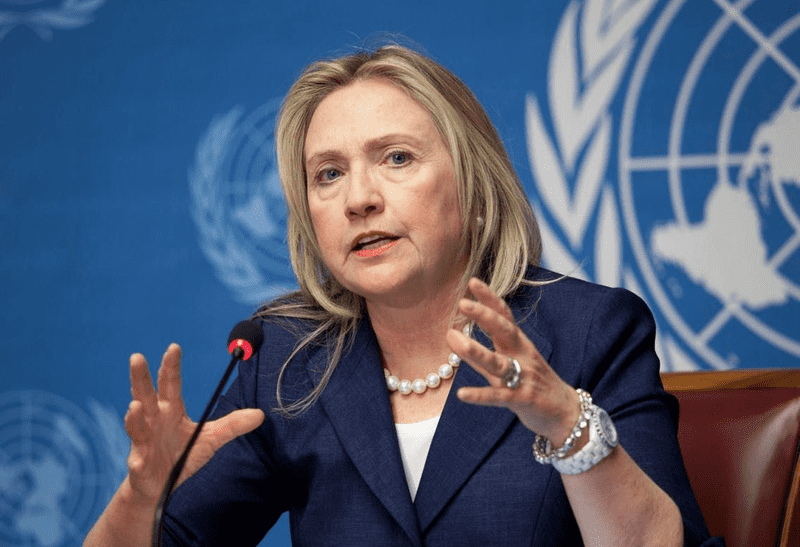As the November presidential election approaches, the issue of medical marijuana has come to the political debate. The Democratic candidate Hillary Clinton has presented a liberal-leaning, yet cautious stand on medical marijuana.
Clinton supports legal access to medical marijuana. She would like to see more research into the medical benefits of cannabis, and has stated that she would support the reclassification of marijuana to increase such research.
"I do think on the federal level we need to remove marijuana from the Schedule I of drugs, move it to Schedule II, which will permit it to be the basis for medical research," said Clinton in an interview with WBZ NewsRadio in Boston in January 2016.
While this support is encouraging, I feel it doesn't go far enough. She needs a more thorough exposure to the current cannabis environment to understand why she needs to "up her game." In particular, she needs more knowledge about:
- Changes in marijuana attitudes
- Who is using medical marijuana and why
- The implications of federal narcotic classification
- Unequal access
- Economic sense
Changing Attitudes
Support for legalizing marijuana for both recreational and medicinal use is at an all-time high. In 1969, at the height of the counterculture movement, Woodstock and Vietnam War protests, fewer than 12 percent of Americans supported marijuana legalization, and only about four percent reported that they had tried marijuana. Research focused on marijuana as a gateway drug, on its psychological effects such as psychosis and physiological intoxication.
Jump ahead nearly 50 years. A 2015 Gallup poll report that 58 percent of Americans support marijuana legalization, a 2015 Harris Poll report that 81 percent support medical marijuana usage and access, and about 76 percent of doctors support medical cannabis. In addition, nearly 49 percent of Americans admit to having tried marijuana and 12 percent are current, regular users.
This growing support for legalized marijuana is a cultural change, which I believe is based on the growing idea that cannabis is safer than alcohol, the recognition that cannabis has specific medical effects that should be explored and the complete failure of the "war on drugs" to curtail illicit drug use. Support is highest among younger individuals (18 to 34 years) and those who typically support Democratic or Independent party candidates and platforms.
Medical Cannabis Users
Approximately 2.6 million Americans use medical cannabis currently. According to a recent and comprehensive survey of medical cannabis users, most are:
- Male (64 percent)
- College educated (84 percent)
- Live in or near a major city (84 percent)
- Between 25 and 54 years of age (61 percent)
Among the survey respondents:
- 84 percent strongly agree that cannabis provides symptom relief
- 66 percent use it as the primary method of treatment for their medical issue
- 64 percent use cannabis daily and 28 percent at least weekly
Federal Narcotic Classification Implications
Marijuana is currently classified as a Schedule 1 narcotic, which by definition means it has "no currently accepted medical use and a high potential for abuse." As such, research is difficult to conduct. It requires a complex application process for a highly restrictive license from the Drug Enforcement Agency. In addition, funding for Schedule I drug research typically comes from the National Institute on Drug Abuse, which tends to limit such studies to the effects of abuse, and not medical applications.
In addition to research roadblocks, cannabis distribution, possession and use remains a criminal offense, and federal laws could supersede state laws. Although the US Justice Department updated its marijuana enforcement policy in 2013 to defer their right to challenge state legislation as long as states actively ensure a policy of strict regulatory control, in my opinion, the threat of federal prosecution remains.
I believe that this threat would be reduced if Clinton's proposed reclassification of marijuana to a Schedule II drug occurs. Marijuana would be downgraded to "dangerous," which would put it in the same category as cocaine, methamphetamine, oxycodone and Adderall. However, this classification is still misleading. Evidence shows that cannabis is a much safer drug compared to these other Schedule II drugs.
Unequal Access
As of 2015, 23 states, the District of Columbia (DC) and Guam have passed medical cannabis legislation. Clinton is on record for supporting state-level legislation for medical cannabis.
"I think that the states moving forward is appropriate and I think the federal government has to move to make this more available for research that they can then distribute to interested people across our country," said Clinton.
Leaving it up to the states, however, means unequal access as more than half of the states continue to block medical cannabis. Patients who could benefit from medical cannabis are unable to legally obtain or use the medication because of where they live. Those who cross state lines could be subject to prosecution upon returning home with their medication.
Economic Sense
Another argument for the liberalization of marijuana legislation is financial. According to "The State of Marijuana Marketing," by ArcView Market Research, "The cannabis industry is growing at a compounded annual rate of 30%, making it one of the fastest growing sectors in the economy." States that have legalized cannabis have received an economic influx: Colorado generated $135 million and Washington generated $70 million in cannabis taxes and license fees in 2015. These numbers are expected to grow.
Contrast that with the cost of enforcing federal marijuana laws. A 2010 study estimated that the cost of prohibiting marijuana was $3.4 billion in
- By contrast, legalization would have generated $8.7 billion in annual revenue.
This information makes it is clear that Clinton needs to become a stronger supporter of medical cannabis. In my opinion, it's just good politics.
